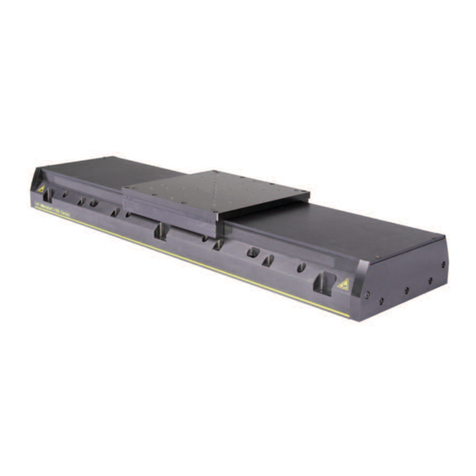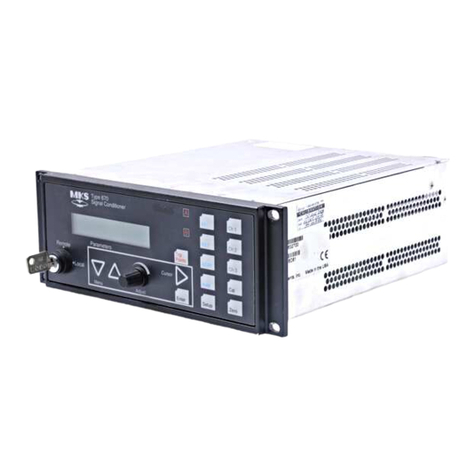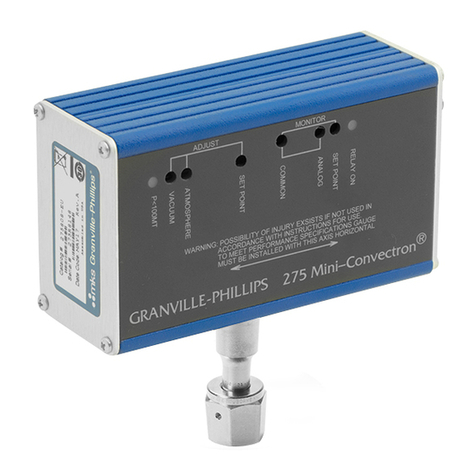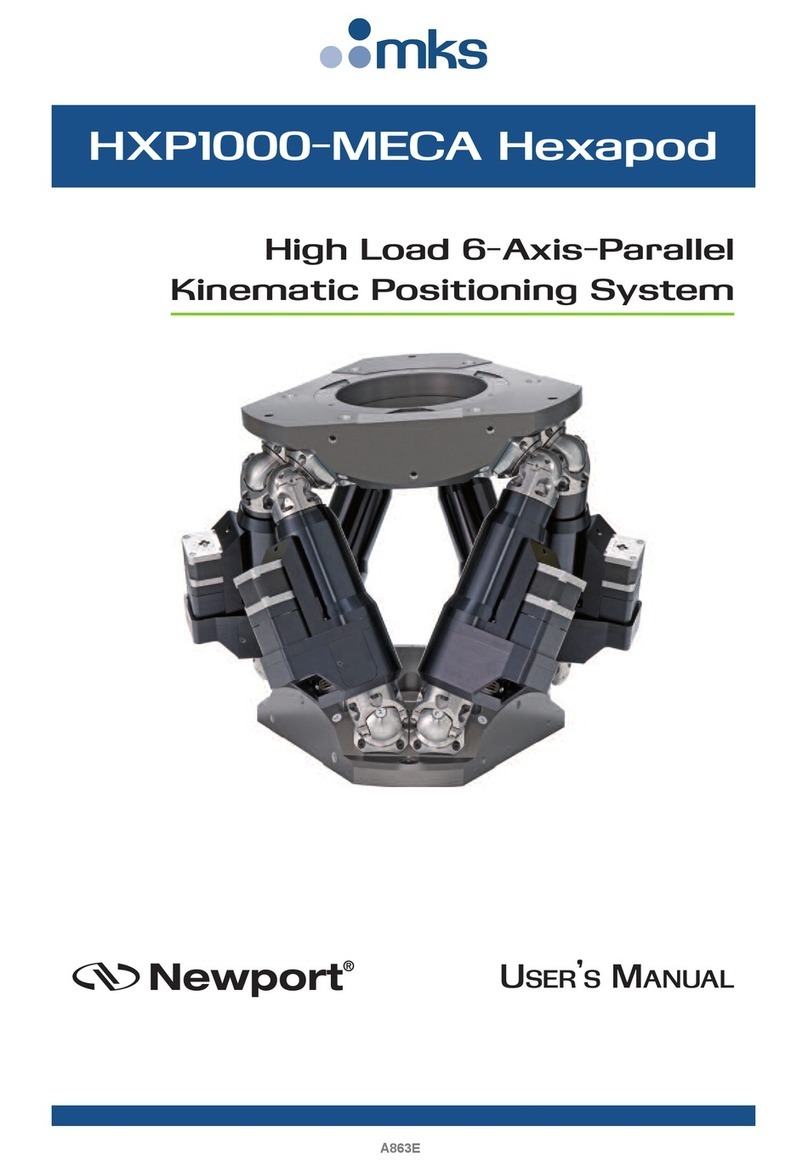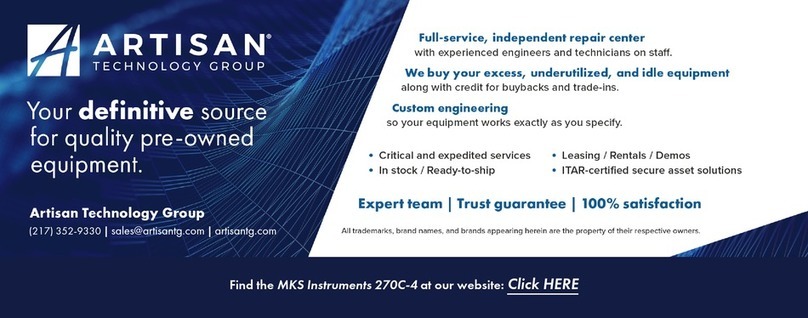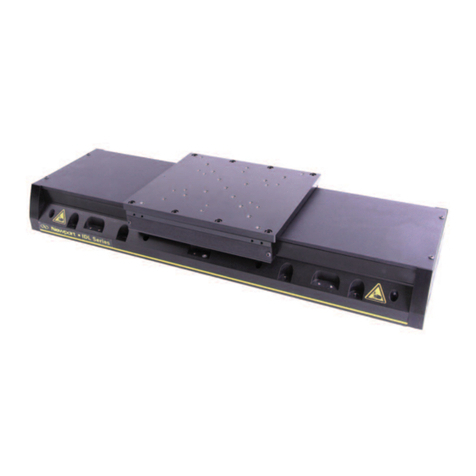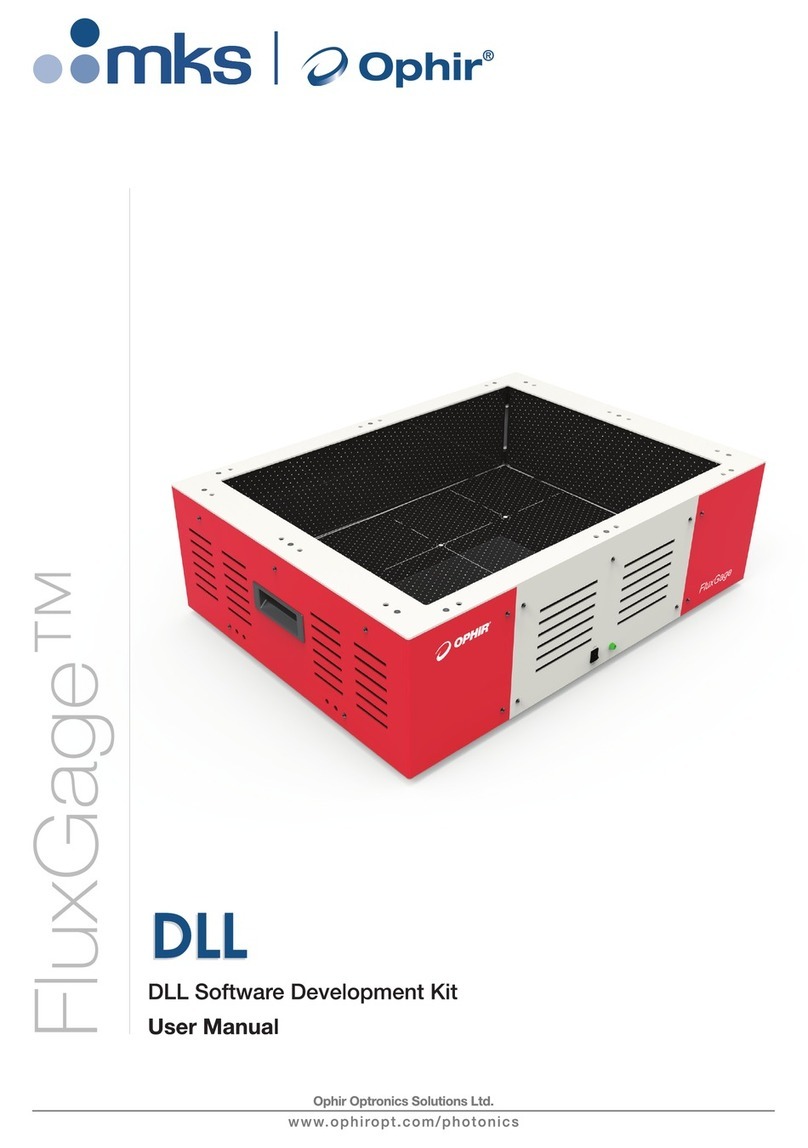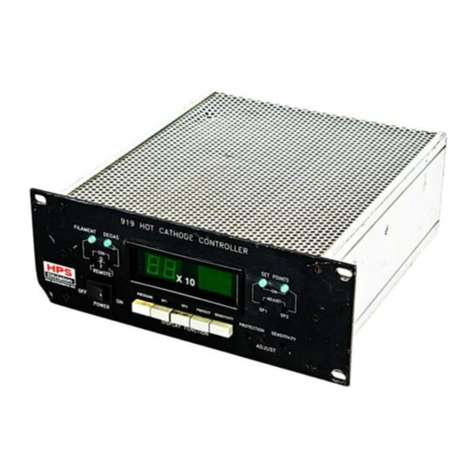
Consideration for CW Lasers: Irradiance
The irradiance of a CW laser is the power per unit area
in W/cm2, given by the power in Watts divided by the
beam area in cm2.
I(W/cm2) = Power(W) / Beam Area (cm2)
Consideration for Pulsed Lasers:
Peak Irradiance and Fluence
The peak irradiance of a pulsed laser is given by the
pulse energy in Joules divided by the beam area in cm2
and the pulse duration in seconds, usually taken as
the FWHM width. The energy per pulse is the average
power divided by the pulse frequency:
EPulse (J) = Average Power (W) / flaser (Hz)
IPeak (W/cm2) = EPulse (J) / Beam Area(cm2)
The uence of a pulsed laser is the pulse energy per
unit area, in units of Joules/cm2, given by the relation:
F(J /cm2) = EPulse (J) / Beam Area (cm2)
Slit Aperture “Instantaneous”
Damage Thresholds
Damage thresholds are reported in NanoScan User
Guide. Ophir-Spiricon does not warrant damage to slit
apertures and detectors due to damage from high power
lasers. Users of high-power lasers must exercise caution
when measuring their laser beams with their NanoScan.
Slit apertures in NanoScan scanheads are made from
a proprietary metallic alloy. The slit apertures are often
blackened to reduce reectivity and minimize reections
back into the laser cavity. Because of possible slit
damage, Photon performed damage threshold tests on
various NanoScan slit apertures to establish general use
guidelines for prevention of damage to slit apertures. If
you are concerned and still not sure, Photon can provide
aperture material that you can use as a test before using
your source on a NanoScan.
Blackened and unblackened apertures with 1.8μm,
5μm and 25μm nominal slit widths were tested. Tests
were made at laser wavelengths of 532nm, 1.06μm,
and 10.6μm. Damage thresholds are dened here to be
the average laser irradiance at which the onset of visual
damage occurs. The average irradiance is dened as
the average power divided by the beam area at the 1/e²
beam diameter.
All tests were performed under normal NanoScan
operating conditions with the aperture slits moving.
Damage to the slit apertures can occur at much lower
power levels if the laser beam is directed into the slit
apertures while the apertures are stationary.
The tests were performed at laser power levels <3 watts
for short time exposures on the order of 5 minutes. The
damage thresholds that were determined are therefore
applicable only for short time exposures at these power
levels. For high power lasers and long exposure times
the damage thresholds are likely to decrease due to
excessive heating of the apertures and/or possible
ablation that does not manifest itself as visual damage
in short term exposure tests. These effects have not
yet been quantied, so users are advised to exercise
extreme caution when attempting to measure high
power beams for long time intervals. Long exposures
may heat the entire NanoScan and cause other failures.
Note that for the case of blackened slit apertures, the
onset of visual damage occurs when the black material
begins to ablate. This type of damage should not
affect the integrity of the slit but only the reectivity of
the aperture. However, this ablation of material may
contribute to particulate contamination of the slits. Slit
integrity is compromised at the higher laser irradiance
associated with damage to unblackened apertures. This
damage takes the forms of wrinkling or creasing of the
aperture due to thermal stress and scoring of the aperture
due to melting of the metallic alloy. At higher irradiance
and longer exposure times the apertures can be cut.
Recommended upper limits of average laser irradiance
based on the results of the visual damage threshold tests
for short time exposure (~5 minutes) at power levels less
than 3 watts are summarized in Table 1. Values for 355nm
were extrapolated from data at 532nm.

